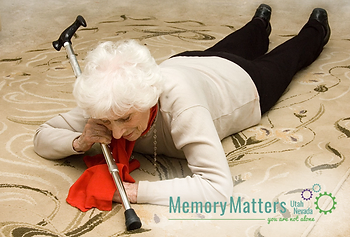Dementia affects each person differently. Symptoms such as confusion, memory loss and disorientation are common, while limited mobility and coordination may affect safety. It is important that family, friends and health professionals help the person with dementia to feel and be as secure as possible.
Safety Inside The Home For People With Dementia
The best living environment for a person with dementia is one that helps them to be as happy and independent as possible. Familiarity with environment and routines is important for a person with dementia. The home environment should help them know where they are and help them find where they want to go. Changes in the environment may add to confusion and disorientation.
Some tips for making the home a safe environment for the person with dementia include:
- Arrange furniture simply and consistently and keep the environment uncluttered.
- Remove loose rugs and seal carpet edges that may be safety hazards.
- Install night-lights in the hallways and in the toilet that may be useful to help a person find their way to the bathroom at night.
- Dispose of, or safely store, all old medications and hazardous materials such as kerosene.
- Remove electric blankets and hot water bottles that can be a safety hazard for a person with dementia.
- Install safety switches, which are now recommended, in homes.
- Use hot water jugs and other appliances with automatic cut-off mechanisms.
- Replace more dangerous forms of heating, such as bar radiators, with safer heating options, such as column heaters.
- Check appliances like heaters and toasters to make sure they do not present any safety hazards.
- Replace long electrical cords on appliances with coiled or retractable cords.
- Consider thermostats to control the temperature of water that comes out of the hot water taps.
- Check that smoke detectors are fully functional – a person with dementia may need someone else to check the battery and make sure the alarm is loud enough.
Safety Outside The Home For People With Dementia
Some people with dementia may become disoriented and get lost in unfamiliar, or even previously familiar, surroundings. It is important that they carry appropriate identification at all times, including their name and address and an emergency contact number. An identity bracelet is ideal.
Some tips for making the area outside the home safe for the person with dementia include:
- Keep paths well swept and clear of overhanging branches.
- Check catches on gates.
- Remove poisonous plants and dispose of hazardous substances from sheds and garages.
Home Safety Checklist
It may be useful to go through the house, room by room, to check for any safety hazards. The following checklist can assist you to remove hazards and make the home a safer environment.
Access to the home
- steps
- paths
Around the house
- Arrangement of the house – not cluttered
- Lighting – adequate
- Floor coverings – non-slip
- Doors, windows and heating
Living area
- Chair heights
- Protruding furniture
Kitchen
- Floor
- Flammable materials
- Taps / Faucets
- Electrical and gas equipment
- Kettle
- Poisons – storage
- Cupboards
- Drainage in floor
- Electrical connections – check they are away from possible contact with water or heating sources.
Bathroom
- Floor – how slippery
- Hot water thermostat control
- Poisons – storage
- Toilet height
- Toilet paper – visibility
Laundry
- Poisons – storage
- Drainage in floor
- Electrical connections – check they are away from possible contact with water
Bedroom
- Bed height
- Chair in bedroom for dressing.
Wandering
As well as making the home safer, it is important to make sure the person with dementia is as safe as possible if they go outside the home.
- Identification bracelet
- Identification and emergency contact number in wallet
- Bell – on door, window and gate.
Independence Aids For The Person With Dementia
- Hand-held shower hoses that allow a person to direct the flow of water as desired
- A shower chair or bath seat that allows a person to be seated while bathing and eliminates the need to lower oneself into the bath
- Handrails near the bath, shower and toilet to provide support and balance
- Easy-to-read clocks and large calendars to help orient to date and time
- Heat sensors or alarms in case of emergency
- A list of contact names and numbers in large print placed by the telephone allows the person to stay connected more easily.
Changes To The Environment For People With Dementia
Solving problems involves continual assessment and planning.
Principles you can use to guide any changes to the environment of a person with dementia include:
- Involve the person with dementia in identifying problems and deciding on changes to their environment, where possible.
- Make sure that modifications suit that person.
- Respond to specific problems – don’t introduce standard modifications.
- Change as little as possible – keep the familiar.
- Build on strengths and maximise their independence.
- Try simple solutions first.
- Make sure that modifications are home-like and dignified.
- Changes should be appropriate to the person’s age and culture.
- Weigh up risks and try to achieve a balance between safety and independence.
- Make sure that family, carers and workers have a safe working environment.
Things To Remember
- Dementia affects each person differently.
- Safety may be affected by dementia symptoms (such as confusion, memory loss and disorientation), limited mobility and coordination, or by changes in the environment.
- Family, friends and health professionals can help the person with dementia feel safe and be as secure as possible.
- A safety checklist can help you to make sure that the environment inside and outside the home is as safe as possible.

